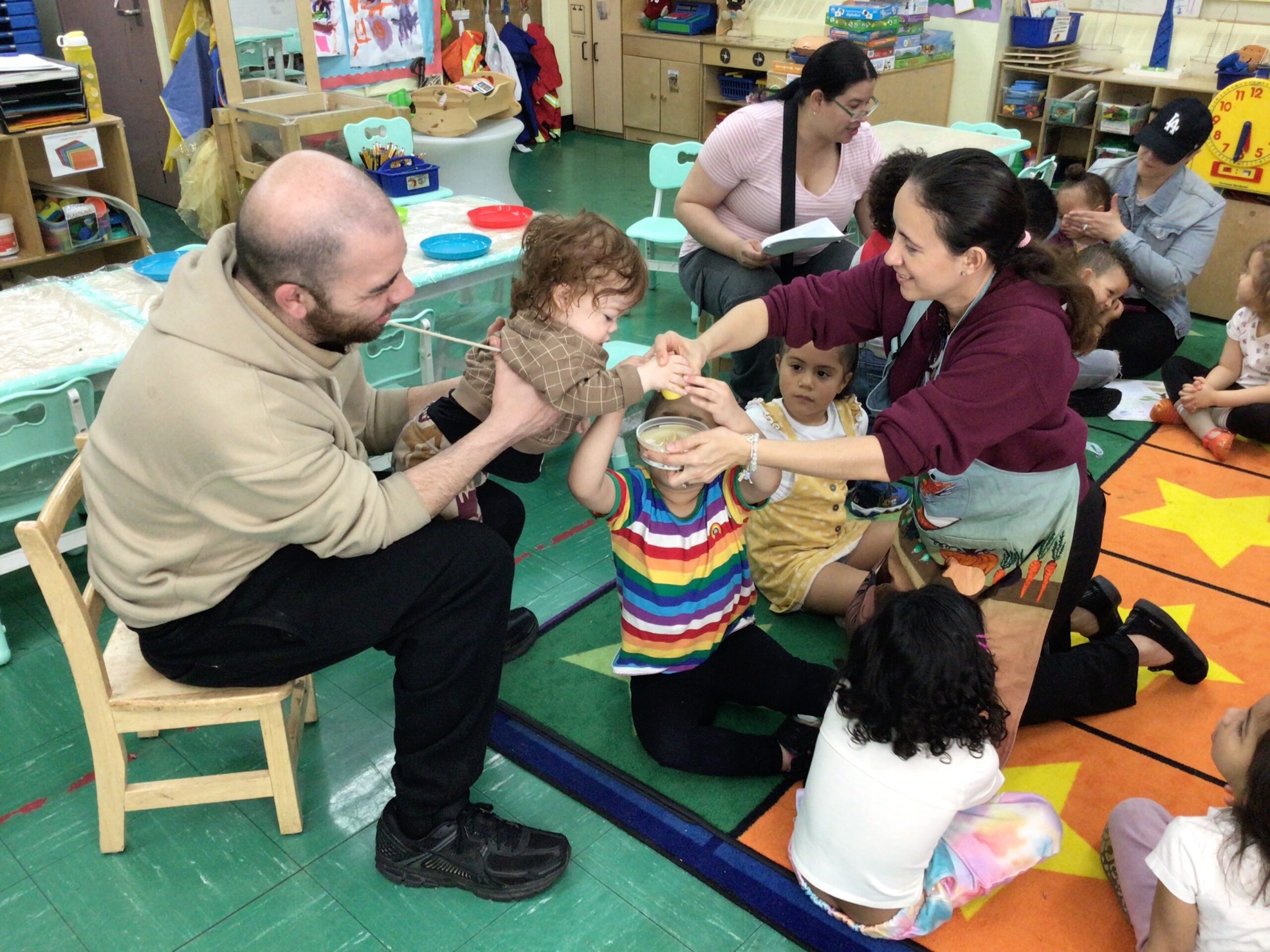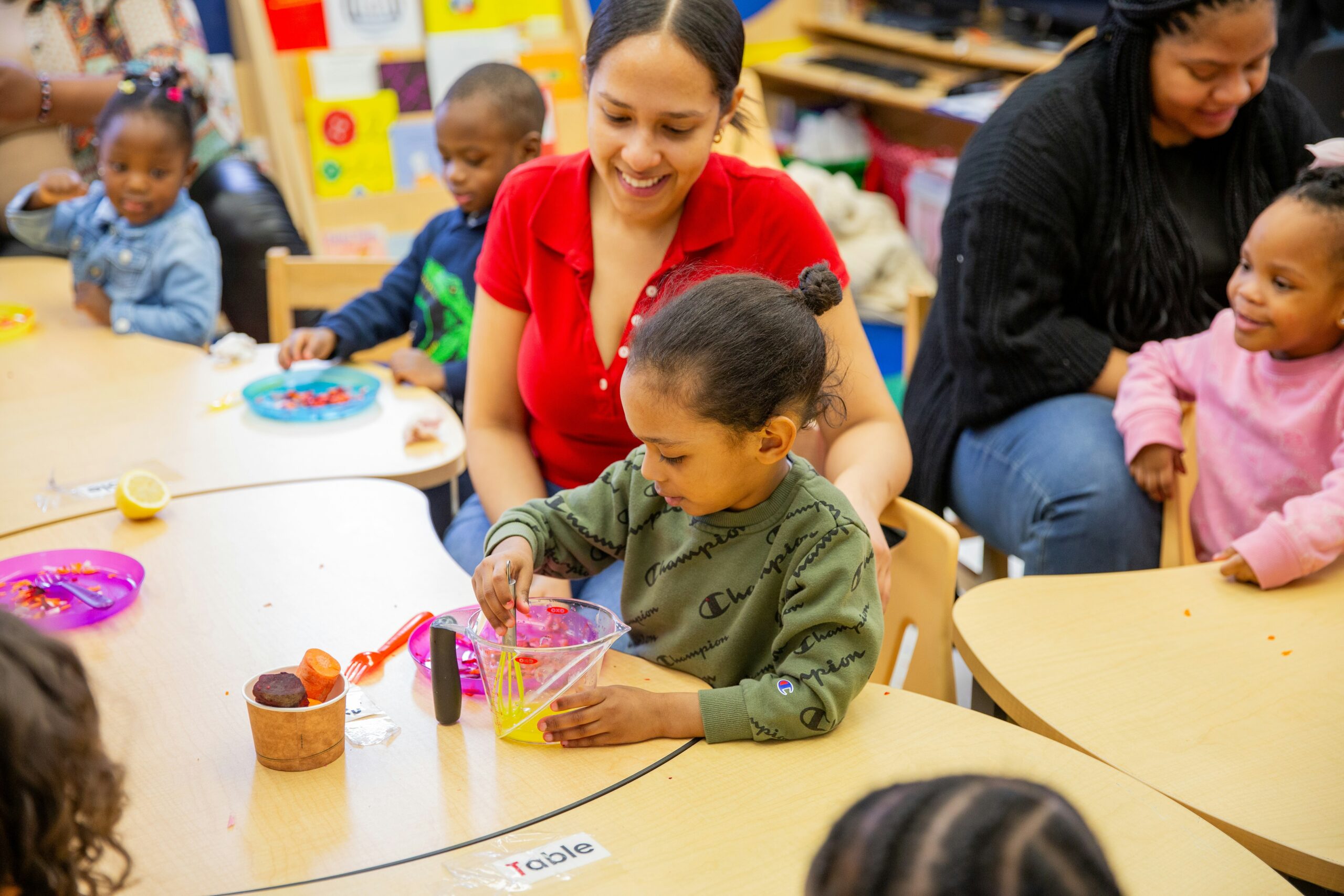Four Essential Areas of Early Child Development Achievable Through Food Education

Author: Lynn Fredericks, Founder and CEO
August 18th, 2025

When FamilyCook embarked on developing our hands-on, food education program for young children under five years, we knew it had to be developmentally engaging. Young children have very short attention spans; you really need to work hard to get their attention. That’s how we developed the idea of a cuddly bunny character: Willow. Entirely loveable, Willow captures the magic of children’s imagination. Over the last 15 years, we have conducted numerous rounds of program enhancements guided by evaluation. In spring of 2025, we arrived at 3 years of consistent, multi-school evaluation results demonstrating that Nibble with Willow™ food education program reliably achieves statistically significant improvements in the following early childhood domains:
- Children’s eating/parent feeding behaviors
- Children’s language, fine motor, socio-emotional development and executive functions
- Parental mealtime stress reduction
- Children’s relationship to their adult caregivers (at school and home)
What happens during engaging food education that can achieve such broad positive outcomes? Let’s take a deep dive into each of the above and explore what is driving change.
1. Children’s eating/parent feeding behaviors. We zero in on two concepts when working with this age group: Repetition and Rituals. Busy parents need structure in their lives to stay on track. So do young children, they need routine to feel safe to try new foods. Nibble with Willow™ intentionally uses the same lesson structure every time making it safe for our special ritual (counting “1,2,3, Nibble”) before trying a new fruit or vegetable. By modeling this ritual in our program, children and parents bring some of these structure home and encourage families to create their own positive mealtime rituals and repetitions. While cooking at home, for instance, parents can have kids perform some easy repetitive tasks like tearing up greens or removing leaves from the stems of herbs. Tedious for parents, children learn through repetition and will always love to help. The result is improved feeding behaviors at home and a reliable time to connect.

2. Children’s language, fine motor, socio-emotional development. Cooking is like one big science experiment. It’s chock full of methodology, sequencing, cause and effect, a wide range of substances to be named and investigated, and there is a payoff at the end: a delicious meal. For educators and parents alike, there is no end to the educational realms that food and cooking offer:
- Vocabulary: describing the taste, texture, color, and appearance of food
- Math: counting, addition, subtraction – even basic fractions
- Comparing and contrasting similar ingredients: by shape, food category, texture, etc.
- Fine motor: cooking tasks like cutting, tearing, measuring, and otherwise manipulating
- Socio-emotional: collaborative recipe prep, taking turns, sharing tools
- Executive functioning: problem solving, predictions, delayed gratification
3.Parental mealtime stress reduction. If parents learned a few truths about cooking as a family, they would be shocked at how effective it is as a weekday stress reducer. Many parents fear their children will make cooking take longer and much messier. What they don’t realize is that children of every age just want their parents’ attention. Cooking together regularly can be that reliable shared time together. The connection that is forged in a shared responsibility of meal preparation makes everyone feel good. Another striking and related reality: children who are participating in the cooking process see that dinner is not ready and stop asking (or whining) about when they will eat. Programs that help children understand the process of making a recipe and then enjoying it, assist children to make the same connections when cooking at home. They naturally want to help and parents can see they are intent on being part of something. A joint goal to connect is accomplished and as children see the cooking process unfold they understand when they will eat without asking or becoming upset.
4. Children’s relationship to their adult caregivers. It’s a pretty universal factor that feeding can be an expression of love. It’s not surprising then that parents of young children are crushed when children reject a meal lovingly prepared. Regular preschool food education can support children to explore new ingredients and feel safer and more comfortable to try them in a group dynamic. Learning the name of the food, how it grows, and seeing pictures and creative stories around foods capture children’s imagination. When programs build on this awareness and gradual acceptance of new foods and share with parents what children are exploring and eating gives parents a segue for progress at home. Parents can celebrate children’s food discoveries and cooking accomplishments by letting children help make similar ingredients at home. Focus on ingredients that children have become interested in allows parents to feed the children without protestations and rejections. Parents and children feel loved and cared for. Relationships blossom as a result.

